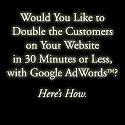

How to Blog for a Transient Audience
This post is by Tim Tyrell-Smith, founder of Tim’s Strategy.
We all have a free flow of readers who pop in, consume our content and move along. And while we have them, we hope to convert them: to have them purchase a product, sign up for our feed, or perhaps join our community for good.
But what if your core audience is transient? Not just a small percentage of them, but the bulk of your readers. They might be in a life stage that requires new knowledge or a key advisor—a life stage that may end before you, the blogger, are ready.
Is your core audience transient?
My primary audience is the active job seeker—a segment of the population that’s highly engaged in my subject. And they’ll stay engaged for the next eight months, on average.
But what happens when they succeed in their job search? Or when the larger macro-economic situation turns around? It’s great news for them, but what about the bloggers looking to build a community in this space?
Of course there are other transient audiences out there. If you write a blog about the following categories, you likely have a transient core audience:
- pregnant or new mothers
- beginning photography
- home buying or selling
- wedding planning
- political campaigns
These topics have audiences that are heavily engaged with you today, but may pick up and go tomorrow.
For some of these categories, readers may come back every two or three years (pregnancy) or every five to ten years (home buying). Some needs are unpredictable and can occur at any time (job search). Finally, some are natural progressions (the beginning photographer shifts to intermediate and advanced photography).
My blog has an unpredictable entry point (lay off) and a natural progression (new job) as an exit.
How do you write effectively for a transient audience? How do you keep them satisfied while you have them, and give them a solid reason to become a long-term reader even if your core content becomes less relevant as their lives change? Here are my tips.
1. Know and reflect their experience.
Either on a landing page or about page, you have to connect with new readers. You need to show them that you’re someone who has the life or category experience to lead them through the content successfully.
That first impression really matters. After all, you have to give them a reason to join in the first place, right? A great way to do this is to tell your story (buying your first house, or having your first baby, perhaps). And do so in a way that reaches the emotional or richly practical core of your subject. Whether your story is based on a real-life success, or a failure, the connection to your story is critical in the beginning.
The ideal reader reaction? “He knows me.” “She’s felt my pain.” “They did it right.”
Next, you have to maintain that credibility throughout the first months of their readership. One thing I hear a lot from my readers is: “How did you get in my head? How did you know that was important to me?” The answer has two parts. First, I was there: I was a job seeker for four months in 2007. Second, I meet with ten or 12 job seekers a week, and I ask them lots of questions, so I can stay as relevant and engaged as I can.
2. Know who they are and what they want.
At Blog World, I sat and watched Darren illustrate the importance of creating reader profiles. And I heard him speak about the value of writing posts directly to each profile. He gave each profile a name and a photo, to make them more personal.
As a consumer marketer, I’d done this for years—but I’d never done it for my blog readers. I’m knee-deep in it now.
Ask yourself, “What’s the core content that my readers are looking for? How does it compare (in terms of voice and complexity) to other sources of content in my category?“
While I don’t want to re-hash the same content that’s already out there for job seekers, I know I need to have a base source of content about resumes, interviewing skills, and career networking. Once I do, I can deliver it uniquely. For example, instead of just writing another “how to write a resume” post, I wrote about writing a bare-knuckled resume and cover letter.
I also provide a lot of free content (templates, tools, and ebooks) because I know “practical, easy-to-use, and affordable” is important to anyone looking for work.
While I’m in the process of creating fee-based products and services, I continue to create free content—and will always do that.
2. Know where they’re going next.
While I stay on my primary topic, I try to sprinkle in some more broadly based content.
This allows me to stay highly relevant, but also to begin introducing my role as more than just a job search expert. I also have a perspective and growing expertise on career strategy and work/life issues. For example, I wrote about the importance of building a stable career and life platform. so that if they were ever laid off again, their lives may not be so dependent on a single job.
To support that breadth, a few months ago I renamed the site with the following tagline: job search, career and life. It used to be solely a job search blog.
I am also developing a career strategy newsletter as a way to join my readers, arm in arm, as they transition into their new job, and are looking for content that will support their successful entry into the new company. This is content that will help keep them in a job, and out of the job search market.
I’m also beginning building my database. This is a must, I now realize—especially for bloggers with a transient audience. I figure this is much better than complaining about their departure.
This way, I can celebrate their success and be a part of their new world in a very natural way. But if they ever need me again for job search, I’m here for that too.
Do you target a transient audience? How do you keep them coming back?
Tim Tyrell-Smith is founder of Tim’s Strategy, a blog that helps professionals succeed in job search, career and life strategy. Follow Tim on Twitter @TimsStrategy and share his 30 Ideas E-Book with job seeking friends!
Post from: ProBlogger Blog Tips
Facebook comments:
1 Comment »
RSS feed for comments on this post. TrackBack URL
Leave a comment

















November 13th, 2010 at 7:25 am
Great blog! I like how everything is well written. I will be back to check for new posts. Thanks!!